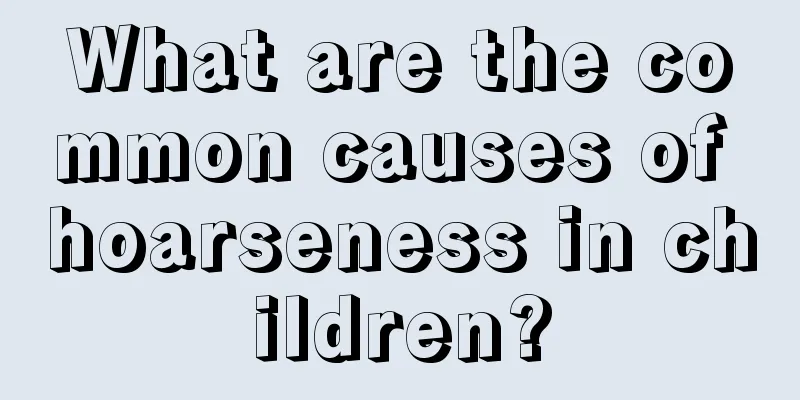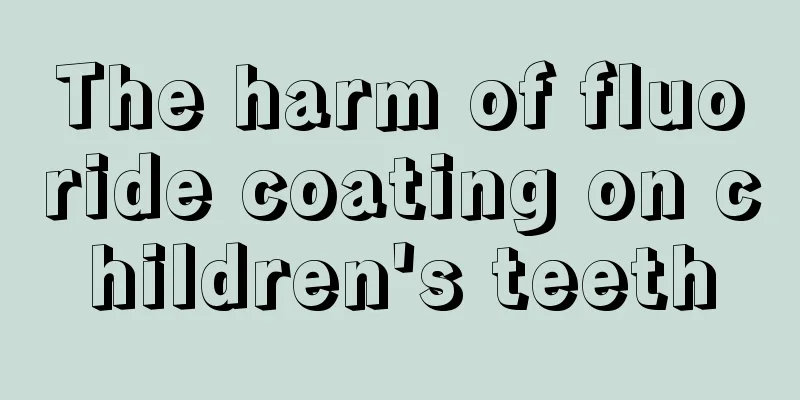Early symptoms of rheumatoid arthritis in children, pay attention to long-term fever

|
Rheumatoid arthritis is not only common among adults, but also in many children. The early symptoms of rheumatoid arthritis in children include fever, swollen lymph nodes, and rash. The onset is generally acute, and it can also cause symptoms of arthritis in the later stages. 1. Whole body type Also known as Still's disease (formerly known as allergic subsepsis), about 10% of JRA children present with systemic type, which is characterized by systemic manifestations and an acute onset. The fever is of the remittent type, fluctuating between 36℃ and 41℃ every day. High fever may be accompanied by chills at first, and the child may become listless. After the fever subsides in a few hours, the child will be able to resume normal activities. Remittent fever may last for weeks or months and then subside spontaneously, but may recur after several weeks or months. Rash is also a typical symptom of this type, often appearing during high fever and appearing and disappearing with the rise and fall of body temperature. The rash is usually round, congested maculopapules, 0.2 to 1.0 cm in size, and may merge into patches, distributed on the chest and proximal limbs. Most children have enlarged liver, spleen and lymph nodes throughout the body, which may be accompanied by mild liver function abnormalities. About half of patients develop pleurisy and pericarditis. There is not much pericardial effusion, but a pericardial friction sound may be present. Pericarditis gradually recovers, and constrictive pericarditis rarely occurs. The myocardium may be affected, but endocarditis is rare. Most children with this type develop polyarthritis at the onset of the disease or several months later. Both large and small joints may be affected. Due to the severe systemic symptoms at the onset of the disease, arthritis is often ignored. Some patients only have arthralgia, myalgia or transient arthritis. In a few children, arthritis may not develop until months or years later. Children may have mild anemia and may experience leukemoid reactions. About 1/4 of children with this type of disease eventually develop severe arthritis. Studies have found that patients with hepatosplenomegaly, serositis, low plasma albumin at the onset of the disease, as well as those who continue to have systemic symptoms and elevated platelets ≥ 600×109/L 6 months after onset are prone to destructive arthritis. 2. Polyarthritis It is characterized by chronic symmetrical polyarthritis, with ≥5 joints affected, especially the small joints of the fingers and toes. Girls are more likely to be affected than boys. The onset is slow or acute, manifested by joint stiffness, swelling and pain, and local fever, with little redness. It usually starts from large joints, such as knees, ankles, and elbows, and gradually affects small joints, resulting in fusiform fingers. About 1/2 of the children have cervical vertebrae affected, resulting in limited neck movement. Involvement of the temporomandibular joint causes difficulty chewing. A small number of people develop cricoarytenoid and arytenoid (laryngeal cartilage) arthritis, causing hoarseness and laryngeal wheezing. In the late stage, the hip joint may be affected and the femoral head may be destroyed, leading to movement disorders. If joint symptoms recur repeatedly and last for several years, the joints will become stiff and deformed, and the muscles around the joints will atrophy. This type of systemic symptoms is relatively mild, with only low fever, loss of appetite, fatigue, anemia, and mild enlargement of the liver, spleen, and lymph nodes, but pericarditis or iridocyclitis are rare. About 1/4 of children with this type have positive rheumatoid factor, the disease develops in late childhood, the arthritis is more severe, and eventually more than half of the children suffer from severe arthritis. |
<<: What to do if your child's baby teeth become loose
>>: What should I do if my baby teeth haven't fallen out and new teeth have grown?
Recommend
What to do if your one-year-old baby has indigestion
Many babies will experience indigestion during th...
What can I use on my child's face for allergies?
Skin allergies are indeed very common in life and...
3-year-old baby nosebleed
Not only adults, but many children also experienc...
What is the treatment for telangiectasia in children?
Recently, the problem of capillary dilation in ma...
What are the methods of making tofu as baby food?
Tofu has a very soft and delicious texture and is...
Neonatal jaundice index
Like other physiological health indicators, the n...
What should I do if my child always has a fever in the middle of the night?
In the cold winter, many babies with low immunity...
Baby coughs and phlegm, what should I eat to get better quickly
In today's social life, the birth of every ba...
Symptoms of poor mental health in newborns
Newborn babies are generally sleepy, because they...
What is the reason for the redness and pain of the little girl's vulva?
When a little girl has redness and pain on her vu...
What is the cause of the child's sternum protrusion?
It is said that children are the flowers of the m...
Can amblyopia in children be cured?
Eyes are the windows to the soul, so protecting e...
Tips for children's health in spring
In fact, in the spring season, bacteria often beg...
What to do if your child has a cold and has pain in his stomach and eyes?
If a child catches a cold while sleeping at night...
Can children eat Panax notoginseng powder?
Children's bodies are in the development stag...









